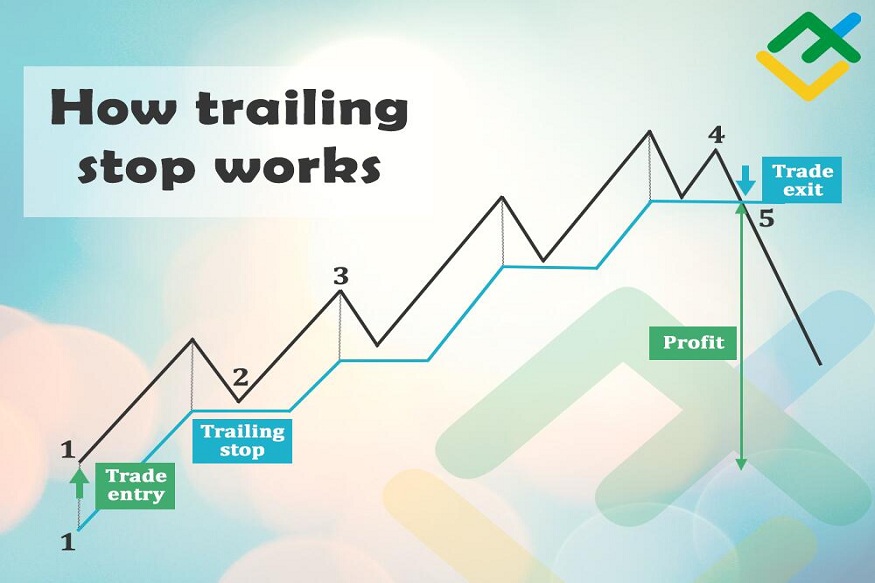Optimising Trade Exits: Combining Stop-Loss and Trailing Stops
 Successful trading is as much about knowing when to exit a position as it is about choosing the right entry point. Many traders focus extensively on identifying opportunities to buy or sell, but without a clear exit strategy, even the most promising trades can lead to losses or reduced profits.
Successful trading is as much about knowing when to exit a position as it is about choosing the right entry point. Many traders focus extensively on identifying opportunities to buy or sell, but without a clear exit strategy, even the most promising trades can lead to losses or reduced profits.
Trade exits, particularly when optimised through the strategic use of stop-loss and trailing stops, allow traders to manage risk, lock in gains, and maintain discipline in volatile markets. By understanding how to combine these tools effectively, traders can enhance both their risk management and overall profitability.
Understanding Trade Exits
A trade exit is the predetermined point at which a trader closes a position, whether to secure profits or limit losses. Exiting trades without a structured approach can result in missed opportunities or catastrophic losses, particularly in fast-moving markets. Trade exits are not merely about numbers on a screen; they are closely tied to a trader’s psychology.
Fear, greed, and uncertainty can easily influence decisions, leading to delayed exits or premature selling. Developing a structured exit strategy helps mitigate these emotional pitfalls. Learning how to use trailing stop loss is a crucial aspect of this process, as it allows traders to systematically protect gains while maintaining flexibility to capitalise on favourable market movements.
Understanding when and how to exit positions is foundational to sustainable trading success.
Stop-Loss Orders: The Foundation of Risk Management
Stop-loss orders are designed to protect a trader’s capital by automatically closing a position at a specified price. They act as a safety net, preventing small losses from turning into devastating financial setbacks.
Traders can choose between fixed stop-losses, which remain at a constant price level, and volatility-based stop-losses that adjust according to market fluctuations. Fixed stops are simple and effective in stable conditions, while volatility-based stops are better suited to dynamic markets where price swings are common.
The key benefit of a stop-loss is its ability to remove emotion from the decision-making process. By setting a predetermined exit, traders can prevent panic selling or holding onto a losing position for too long. Stop losses are most effective when positioned thoughtfully, such as just beyond technical support or resistance levels, ensuring the market has room to fluctuate without prematurely closing a trade.
Trailing Stops: Locking in Profits
Trailing stops differ from traditional stop losses by moving in favour of the trade as the market price advances. Unlike fixed stops, a trailing stop is dynamic, adjusting automatically to protect profits while giving the position room to grow.
For instance, in a rising market, a trailing stop might follow the price at a set percentage or dollar amount below the peak, ensuring that gains are preserved if the market reverses. This mechanism allows traders to benefit from upward trends without constantly monitoring positions, reducing emotional decision-making and stress. Trailing stops are particularly effective in trending markets, allowing profits to accumulate while limiting exposure to sudden reversals.
Proper implementation requires understanding both the volatility of the asset and the trader’s risk tolerance, ensuring that the stop is neither too tight to trigger unnecessarily nor too loose to risk substantial losses.
Combining Stop-Loss and Trailing Stops for Optimised Exits
The most effective exit strategies often involve using stop-loss and trailing stops in tandem. An initial stop-loss can be placed to protect the capital at the moment the trade is opened, establishing a baseline level of risk.
As the market moves favorably, the stop can be converted into a trailing stop, gradually locking in profits without capping potential upside. This combination offers both security and flexibility, allowing traders to ride trends while maintaining a safety net.
For example, a trader entering a position in a volatile stock may set a stop-loss just below a key support level. Once the price climbs significantly, a trailing stop can be implemented, ensuring that gains are protected while allowing the position to benefit from further upward momentum. By integrating these tools, traders can manage risk more effectively and improve their overall risk-reward profile.
Factors to Consider When Setting Stops
Several factors influence how traders should set stop-loss and trailing stops. Market volatility is a primary consideration; highly volatile assets require wider stops to avoid premature triggering.
The duration of the trade also plays a role. Short-term traders may need tighter stops to protect against intraday fluctuations, while longer-term traders can afford more flexibility to capture larger trends.
Trading style is equally important; day traders, swing traders, and position traders each have different exit needs and risk tolerances. Technical indicators and chart patterns, such as support and resistance levels, provide useful guidance for positioning stops effectively. By evaluating these factors, traders can tailor their stop strategies to the specific market conditions and their trading objectives.
Conclusion
Optimising trade exits through the combination of stop-loss and trailing stops is a cornerstone of effective trading. While stop-loss orders provide a protective foundation, trailing stops allow traders to secure profits and participate in favourable trends. Together, these tools create a balanced strategy that reduces emotional decision-making and enhances risk management.
By considering market conditions, trade duration, and personal risk tolerance, traders can implement an exit strategy that potentially maximises returns while preserving capital. Mastering the art of trade exits is essential for any trader seeking sustainable success in dynamic markets.
